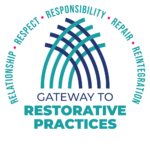
Adults can offer verbal and/or physical help to model problem solving. This helps students recognize and name feelings, identify problems, and come up with ideas for solving the problem, and try possible solutions.
Four Steps to Problem-Solving1
- “Acknowledge the problem. ‘Tim has the ball, and you want to use it.’
- Ask guiding questions. ‘Have you asked Tim to give you the ball?
- State a solution or physically demonstrate. ‘Tell Tim that you would like to use the ball when he’s finished.
- Summarize the problem-solving approach for student. “‘Next time, you want to use the ball, you can try to remember to ask to have a turn.’”
Whether the problem relates to playground balls or interacting with others, modelling problem-solving methods shows students different ways to overcome obstacles. “As children become more familiar and experienced with this process, they can be encouraged to generate suggestions or alternatives of their own.”1
Sources:
- Guiding Children’s Behavior. BC Health Planning, 2003. https://oneskycommunity.com/wp-content/uploads/2015/11/Guiding-Childrens-Behaviour.pdf
- Image: puzzle-28879_1280-Pixabay.com

